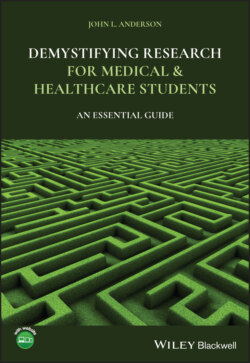Читать книгу Demystifying Research for Medical and Healthcare Students - John L. Anderson - Страница 37
The ‘Hawthorne Effect’
ОглавлениеThe ‘Hawthorne Effect’ took its name from a series of studies on workers' productivity between 1922 and 1932 in the Western Electric Factory in Chicago – in the ‘Hawthorne’ works. At this period of time in American history, there was a near obsession with finding ways of making factory production more efficient. ‘Time and motion’ studies were rife. An early pioneer in this was Henry Ford who, in 1913, introduced the ‘assembly line’ in his car factories in which the work – cars being assembled – was brought to the workers in assembly lines rather that the workers having to move from car to car, thus cutting the time it took to complete the assembly of a Model T Ford car from 12 hours to 2.5 hours. As Henry Ford said, ‘Walking is not a paying operation’ (cited in Tuckett 1976). So, the initial experiments in the Hawthorne works were aimed at finding things which improved workers' productivity. A special production room – the bank‐wiring room – was set up so that workers could do their work in ‘laboratory’ conditions. Observers sat in and watched what was going on. The work involved wiring boards of electrical circuits. The finished circuit boards were then placed in a tub. These could be counted as a measure of productivity and workers could be paid according to the numbers of circuit boards they completed.
The first variable to be studied was the lighting – would workers be more productive in higher/lower levels of light? So, the lighting level was increased. And productivity increased. Lighting levels were lowered; productivity increased. Cleaning the workplace, removing obstacles, and changing the working positions all seemed to increase productivity. Shortening the working day increased output. Returning to the original hours increased output. Other variables were experimented with. The results were that changing a variable usually resulted in increases in production – even when the change was back to the original condition! Output seemed to slump when the experiment was ended. Note that there is some controversy about this – no one has been able to identify the original data. Thus, Richard Nisbett has described the Hawthorne effect as ‘a glorified anecdote’. But, if that is what it is, I think it is an illustrative one. However, it is still used in Social Psychology as an example of compliant behaviours during experimental situations. The most controversial of these were the experiments conducted by Milgram where experimental participants were instructed to carry on giving electric shocks to supposed ‘subjects’ in a phoney experiment, even though the gauges showed lethally high levels of electric shocks! And Zimbardo, who set up a mock prison setting then allocated roles of ‘guards’ and ‘prisoners’ to participants – with astounding results! (Read these – you will be shocked [no pun intended] and amazed at what people will do when they think they are taking part in an experiment!)
So, the ‘Hawthorne Effect’ is a term we use to describe a tendency in some people to try to do their best when they are taking part in experiments. It may be that the whole experimental situation, and the attention that they receive from the researchers, results in changes in their behaviour.
I first came across the term in 1971 at a conference in Aberdeen on research into doctor–patient communication. One presenter mentioned in her work that she had taken steps to avoid the ‘Hawthorne Effect’. This stunned everybody there – ‘What's that?’ ‘Have you heard of it?’ Then, after some considerable digging, someone came up with the answer, ‘It's the bank wiring room experiments!’ All of us had read about them in our undergraduate psychology or sociology courses and referred to them as ‘the bank wiring room experiments’. This immediately prompted a tendency for conference participants to refer to spurious jargon terms to try to catch each other out! (I sometimes wonder if we ever grow up!) Of course, in medicine, the ‘Hawthorne Effect’ is known as and is referred to as … that's right, the ‘Placebo Effect’.
And that is why we tend to expect experiments involving humans to have at least two arms, one of which will involve a ‘control situation’ or a ‘placebo group’ who do not receive an active intervention or treatment.
For further reading on this topic, try Fox, Brennan, and Chasen (2008), Kolata (1998), Landsberger (1958), Levitt and List (2011), and McCarney, Warner, and Iliffe, et al. (2007).
